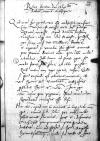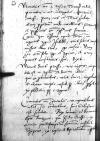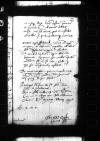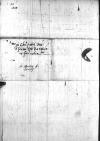Quid rerum Cracow (Kraków, Cracovia), city in southern Poland, Małopolska, on the Vistula river, from 1038 capital of the Kingdom of Poland⌊hicCracow (Kraków, Cracovia), city in southern Poland, Małopolska, on the Vistula river, from 1038 capital of the Kingdom of Poland⌋ egerit vir iste ambitiosus, non sane scio. Visus est mihi raro ad Sigismund I Jagiellon (Zygmunt I) (*1467 – †1548), King of Poland and Grand Duke of Lithuania (1506-1548); Duke of Głogów (Glogau) (1499-1506), Duke of Opava (1501-1506), Governor of Silesia (1504-1506); son of King Kazimierz IV Jagiellon and Elisabeth of Austria
Bona Sforza (*1494 – †1557), Queen of Poland and Grand Duchess of Lithuania (1518-1557); the second wife of Sigismund I Jagiellon; Duchess of Bari and Rossano; daughter of Gian Galeazzo Sforza of Milan and Isabella of Aragon⌊principumSigismund I Jagiellon (Zygmunt I) (*1467 – †1548), King of Poland and Grand Duke of Lithuania (1506-1548); Duke of Głogów (Glogau) (1499-1506), Duke of Opava (1501-1506), Governor of Silesia (1504-1506); son of King Kazimierz IV Jagiellon and Elisabeth of Austria
Bona Sforza (*1494 – †1557), Queen of Poland and Grand Duchess of Lithuania (1518-1557); the second wife of Sigismund I Jagiellon; Duchess of Bari and Rossano; daughter of Gian Galeazzo Sforza of Milan and Isabella of Aragon⌋ conspectum venisse. Apud Bona Sforza (*1494 – †1557), Queen of Poland and Grand Duchess of Lithuania (1518-1557); the second wife of Sigismund I Jagiellon; Duchess of Bari and Rossano; daughter of Gian Galeazzo Sforza of Milan and Isabella of Aragon⌊dominam nostramBona Sforza (*1494 – †1557), Queen of Poland and Grand Duchess of Lithuania (1518-1557); the second wife of Sigismund I Jagiellon; Duchess of Bari and Rossano; daughter of Gian Galeazzo Sforza of Milan and Isabella of Aragon⌋ rarissime idque non alia de causa, quod quidem ego sciam, nisi ut talleros, ducatos et argentum, si venalia Cracow (Kraków, Cracovia), city in southern Poland, Małopolska, on the Vistula river, from 1038 capital of the Kingdom of Poland⌊isticCracow (Kraków, Cracovia), city in southern Poland, Małopolska, on the Vistula river, from 1038 capital of the Kingdom of Poland⌋ essent, coemeret pro pecunia dominae nostrae, qua ille multum abundat. Ille tamen id secrete aget, si modo secreto fieri fieri ab illo possit. Quid autem cum Sigismund I Jagiellon (Zygmunt I) (*1467 – †1548), King of Poland and Grand Duke of Lithuania (1506-1548); Duke of Głogów (Glogau) (1499-1506), Duke of Opava (1501-1506), Governor of Silesia (1504-1506); son of King Kazimierz IV Jagiellon and Elisabeth of Austria⌊regeSigismund I Jagiellon (Zygmunt I) (*1467 – †1548), King of Poland and Grand Duke of Lithuania (1506-1548); Duke of Głogów (Glogau) (1499-1506), Duke of Opava (1501-1506), Governor of Silesia (1504-1506); son of King Kazimierz IV Jagiellon and Elisabeth of Austria⌋ egerit, nescio. Credo, si quid eiusmodi est alicuius momenti, id vel reverendissimus dominus Samuel Maciejowski (*1499 – †1550), humanist and diplomat, one of the most trusted advisors to King Sigismund I and then to his son Sigismund II Augustus; from 1521 Canon of the Collegiate Chapter in Sandomierz, and from 1530 in Kielce; from 1531 Canon of Gniezno; from 1532 or 1533 to 1537 royal secretary (previously scribe at the royal chancellery); 1537-1539 Grand Secretary; 1539-1547 Crown Vice-Chancellor; 1539-1541 Bishop of Chełm; 1541-1545 Bishop of Płock; 1545-1550 Bishop of Cracow; 1547-1550 Crown Grand Chancellor; in 1532 royal envoy to Rome; in 1534 and 1538 royal envoy to the local diets (WYCZAŃSKI 1990, p. 257-258; Urzędnicy 10, p. 184; PSB 19 Machowski - Maria Kazimiera, p. 64-69)⌊vicecancellariusSamuel Maciejowski (*1499 – †1550), humanist and diplomat, one of the most trusted advisors to King Sigismund I and then to his son Sigismund II Augustus; from 1521 Canon of the Collegiate Chapter in Sandomierz, and from 1530 in Kielce; from 1531 Canon of Gniezno; from 1532 or 1533 to 1537 royal secretary (previously scribe at the royal chancellery); 1537-1539 Grand Secretary; 1539-1547 Crown Vice-Chancellor; 1539-1541 Bishop of Chełm; 1541-1545 Bishop of Płock; 1545-1550 Bishop of Cracow; 1547-1550 Crown Grand Chancellor; in 1532 royal envoy to Rome; in 1534 and 1538 royal envoy to the local diets (WYCZAŃSKI 1990, p. 257-258; Urzędnicy 10, p. 184; PSB 19 Machowski - Maria Kazimiera, p. 64-69)⌋ aut Stanisław Hozjusz (Stanisław Hosz, Stanislaus Hosius) (*1504 – †1579), diplomat and theologian; 1534-1538 secretary to the Bishops of Cracow Piotr Tomicki and Jan Chojeński; 1538-1549 royal secretary; 1538-1549 Canon of Ermland (Warmia) and from 1539 Cantor; 1540-1550 Canon of Cracow; 1549-1551 Bishop of Kulm (Chełmno); 1551-1579 Bishop of Ermland; in 1560 elevated to Cardinal; 1561-1563 Papal Legate to the General Council of Trent; in 1573 appointed Grand Penitentiary to Pope Gregory XIII (SBKW, p. 95-96; KOPICZKO 2, p. 129-130)⌊OsiusStanisław Hozjusz (Stanisław Hosz, Stanislaus Hosius) (*1504 – †1579), diplomat and theologian; 1534-1538 secretary to the Bishops of Cracow Piotr Tomicki and Jan Chojeński; 1538-1549 royal secretary; 1538-1549 Canon of Ermland (Warmia) and from 1539 Cantor; 1540-1550 Canon of Cracow; 1549-1551 Bishop of Kulm (Chełmno); 1551-1579 Bishop of Ermland; in 1560 elevated to Cardinal; 1561-1563 Papal Legate to the General Council of Trent; in 1573 appointed Grand Penitentiary to Pope Gregory XIII (SBKW, p. 95-96; KOPICZKO 2, p. 129-130)⌋ proscribet Reverendissimae Dominationi Vestrae. Iam ego nunc, nescio qua pigritia, istarum rerum investigandarum curiosus esse desii.
Hoc etiam apud nos canonicos in Cracow Chapter ⌊capituloCracow Chapter ⌋ nostro egit. Oravit sibi solvi per nos mille plus minus florenos, quos ei defunctus Piotr Gamrat (*1487 – †1545), 1509-1518 parish priest in Wyszków; 1519 scholastic of Płock; 1526 Gniezno canon; 1528 dean of Płock; 1529 Warsaw scholastic; 1532-1538 general commissioner and admistrator of Crown lands in Masovia; provost at the chapter of St. Florian in the Kleparz district in Cracow, and later of St. Michael in Płock; 1531 bishop of Kamieniec; 1532 Dean of Warsaw; 1535 bishop of Przemyśl; 1538 - of Płock; 1538 - of Cracow; 1541 archbishop of Gniezno and primate (with the approval of the Holy See he retained the bishopric of Cracow) (PSB 7, 264-266)⌊archiepiscopusPiotr Gamrat (*1487 – †1545), 1509-1518 parish priest in Wyszków; 1519 scholastic of Płock; 1526 Gniezno canon; 1528 dean of Płock; 1529 Warsaw scholastic; 1532-1538 general commissioner and admistrator of Crown lands in Masovia; provost at the chapter of St. Florian in the Kleparz district in Cracow, and later of St. Michael in Płock; 1531 bishop of Kamieniec; 1532 Dean of Warsaw; 1535 bishop of Przemyśl; 1538 - of Płock; 1538 - of Cracow; 1541 archbishop of Gniezno and primate (with the approval of the Holy See he retained the bishopric of Cracow) (PSB 7, 264-266)⌋ pro panno, pro vitro debebat. Cui ad 1546-06-24⌊festum sancti Ioannis Baptistae1546-06-24⌋ diximus solutionem, modo sit, unde id fiat.
 BCz, 247, p. 408
BCz, 247, p. 408
Mikołaj Cikowski (*ca. 1510 – †1570)⌊NuntiusMikołaj Cikowski (*ca. 1510 – †1570)⌋ noster a Suleiman the Magnificent (*1494 – †1566), 1520-1566 Sultan of the Ottoman Empire⌊caesare TurcorumSuleiman the Magnificent (*1494 – †1566), 1520-1566 Sultan of the Ottoman Empire⌋ rediit. Privatim a me interrogatus narravit mihi pacem nos cum The Ottoman Turks (Turcae) ⌊TurcisThe Ottoman Turks (Turcae) ⌋ habere, etiam perpetuam, modo vellemus, sciremus et possemus eam ipsi nos servare. Ceterum, quae confecerit apud Suleiman the Magnificent (*1494 – †1566), 1520-1566 Sultan of the Ottoman Empire⌊TurcumSuleiman the Magnificent (*1494 – †1566), 1520-1566 Sultan of the Ottoman Empire⌋ in negotiis Isabella Jagiellon (*1519 – †1559), 1539-1559 Queen of Hungary; from 1539 wife of John Zápolya, King of Hungary, mother of John II Sigismund Zápolya; daughter of Sigismund Jagiellon, King of Poland, and Bona Sforza⌊reginae IsabellaeIsabella Jagiellon (*1519 – †1559), 1539-1559 Queen of Hungary; from 1539 wife of John Zápolya, King of Hungary, mother of John II Sigismund Zápolya; daughter of Sigismund Jagiellon, King of Poland, and Bona Sforza⌋, cuius solius causa hidden by binding⌈[a]a hidden by binding⌉ missus Ottoman Empire (Turkey, Turcia)⌊illucOttoman Empire (Turkey, Turcia)⌋ erat, ego nescio. Nam haec coram solo Sigismund I Jagiellon (Zygmunt I) (*1467 – †1548), King of Poland and Grand Duke of Lithuania (1506-1548); Duke of Głogów (Glogau) (1499-1506), Duke of Opava (1501-1506), Governor of Silesia (1504-1506); son of King Kazimierz IV Jagiellon and Elisabeth of Austria⌊regeSigismund I Jagiellon (Zygmunt I) (*1467 – †1548), King of Poland and Grand Duke of Lithuania (1506-1548); Duke of Głogów (Glogau) (1499-1506), Duke of Opava (1501-1506), Governor of Silesia (1504-1506); son of King Kazimierz IV Jagiellon and Elisabeth of Austria⌋ et Bona Sforza (*1494 – †1557), Queen of Poland and Grand Duchess of Lithuania (1518-1557); the second wife of Sigismund I Jagiellon; Duchess of Bari and Rossano; daughter of Gian Galeazzo Sforza of Milan and Isabella of Aragon⌊reginaBona Sforza (*1494 – †1557), Queen of Poland and Grand Duchess of Lithuania (1518-1557); the second wife of Sigismund I Jagiellon; Duchess of Bari and Rossano; daughter of Gian Galeazzo Sforza of Milan and Isabella of Aragon⌋ et coram paucis consiliariis Mikołaj Cikowski (*ca. 1510 – †1570)⌊hicMikołaj Cikowski (*ca. 1510 – †1570)⌋ dixit.
Monetae Albrecht I von Hohenzollern-Ansbach (Albrecht von Brandenburg) (*1490 – †1568), 1511-1525 Grand Master of the Teutonic Order; from 1525 to his death Duke in Prussia as a liegeman of the Polish king; son of Friedrich V of Brandenburg der Ältere and Sophia Jagiellon (daughter of Casimir IV Jagiellon), nephew of Sigismund I, King of Poland; founder of the university in Königsberg (1544)⌊ducis PrussiaeAlbrecht I von Hohenzollern-Ansbach (Albrecht von Brandenburg) (*1490 – †1568), 1511-1525 Grand Master of the Teutonic Order; from 1525 to his death Duke in Prussia as a liegeman of the Polish king; son of Friedrich V of Brandenburg der Ältere and Sophia Jagiellon (daughter of Casimir IV Jagiellon), nephew of Sigismund I, King of Poland; founder of the university in Königsberg (1544)⌋ vis ingens impor hidden by binding⌈[or]or hidden by binding⌉tata est in Poland (Kingdom of Poland, Polonia)⌊RegnumPoland (Kingdom of Poland, Polonia)⌋ et dominia illius. Quae a probatoribus veluti levior improbata hidden by binding⌈[a]a hidden by binding⌉ et idcirco receptio ususque illius prohibetur hidden by binding⌈[ur]ur hidden by binding⌉ explodeturque e Poland (Kingdom of Poland, Polonia)⌊RegnoPoland (Kingdom of Poland, Polonia)⌋.
Diet of Poland ⌊Conventus noster generalisDiet of Poland ⌋ magnatibus nostris sic cudentibus sine conclusione est solutus. Sigismund I Jagiellon (Zygmunt I) (*1467 – †1548), King of Poland and Grand Duke of Lithuania (1506-1548); Duke of Głogów (Glogau) (1499-1506), Duke of Opava (1501-1506), Governor of Silesia (1504-1506); son of King Kazimierz IV Jagiellon and Elisabeth of Austria⌊RexSigismund I Jagiellon (Zygmunt I) (*1467 – †1548), King of Poland and Grand Duke of Lithuania (1506-1548); Duke of Głogów (Glogau) (1499-1506), Duke of Opava (1501-1506), Governor of Silesia (1504-1506); son of King Kazimierz IV Jagiellon and Elisabeth of Austria⌋ tamen cum dominis hidden by binding⌈[s]s hidden by binding⌉ episcopis dumtaxat pro praesidio Rus (Russia)⌊RussiaeRus (Russia)⌋ ex amore pacis, pauperum hominum, instituit czopowe ex regiis et spiritualium oppidis hidden by binding⌈[is]is hidden by binding⌉  BCz, 247, p. 409 et insuper rex litteras restium primarum et secundarum ad omnes terras misit, ut sint omnes parati et instructi ad bellum, si quod undecumque eveniret.
BCz, 247, p. 409 et insuper rex litteras restium primarum et secundarum ad omnes terras misit, ut sint omnes parati et instructi ad bellum, si quod undecumque eveniret.
Ioannes Restembergk
Johann Lang (Johann Lange, Ioannes Langus Silesius) (*1503 – †1567), studied in Cracow and Vienna; doctor of both canon and civil law, secretary, diplomat and counsellor of Ferdinand I of Habsburg, his envoy and agent at the Polish court (ADB, Bd., 17, s. 638-639; PSB 16, 478-481)⌊OratoresIoannes Restembergk
Johann Lang (Johann Lange, Ioannes Langus Silesius) (*1503 – †1567), studied in Cracow and Vienna; doctor of both canon and civil law, secretary, diplomat and counsellor of Ferdinand I of Habsburg, his envoy and agent at the Polish court (ADB, Bd., 17, s. 638-639; PSB 16, 478-481)⌋ Ferdinand I of Habsburg (*1503 – †1564), from 1521 Archduke of Austria, from 1526 King of Bohemia and Hungary, Croatia and Slavonia as Ferdinand I, 1531-1558 King of the Romans, 1558-1564 Holy Roman Emperor; son of Philip I the Handsome and Joanna the Mad of Castile, a younger brother of Charles V of Habsburg⌊regis FerdinandiFerdinand I of Habsburg (*1503 – †1564), from 1521 Archduke of Austria, from 1526 King of Bohemia and Hungary, Croatia and Slavonia as Ferdinand I, 1531-1558 King of the Romans, 1558-1564 Holy Roman Emperor; son of Philip I the Handsome and Joanna the Mad of Castile, a younger brother of Charles V of Habsburg⌋ iverunt ad Sigismund II Augustus Jagiellon (Zygmunt II August) (*1520 – †1572), 1529-1572 Grand Duke of Lithuania (ruled from 1544); 1530-1572 King of Poland (crowned vivente rege (ruled from 1548, after the death of his father); son of Sigismund I Jagiellon and Bona Sforza⌊regem iuvenemSigismund II Augustus Jagiellon (Zygmunt II August) (*1520 – †1572), 1529-1572 Grand Duke of Lithuania (ruled from 1544); 1530-1572 King of Poland (crowned vivente rege (ruled from 1548, after the death of his father); son of Sigismund I Jagiellon and Bona Sforza⌋ in Lithuania⌊LithuaniamLithuania⌋ repetitum ab illius maiestate thesauros, argentum, clenodia et mundum muliebrem Elisabeth of Austria (Elizabeth von Habsburg) (*1526 – †1545), Queen of Poland, Grand Duchess of Lithuania; first wife of Sigismund II August Jagiellon (1543-1545), daughter of Ferdinand I of Habsburg, and Anna Jagiellon⌊reginae ElisabetaeElisabeth of Austria (Elizabeth von Habsburg) (*1526 – †1545), Queen of Poland, Grand Duchess of Lithuania; first wife of Sigismund II August Jagiellon (1543-1545), daughter of Ferdinand I of Habsburg, and Anna Jagiellon⌋ defunctae. Ioannes Restembergk
Johann Lang (Johann Lange, Ioannes Langus Silesius) (*1503 – †1567), studied in Cracow and Vienna; doctor of both canon and civil law, secretary, diplomat and counsellor of Ferdinand I of Habsburg, his envoy and agent at the Polish court (ADB, Bd., 17, s. 638-639; PSB 16, 478-481)⌊GermaniIoannes Restembergk
Johann Lang (Johann Lange, Ioannes Langus Silesius) (*1503 – †1567), studied in Cracow and Vienna; doctor of both canon and civil law, secretary, diplomat and counsellor of Ferdinand I of Habsburg, his envoy and agent at the Polish court (ADB, Bd., 17, s. 638-639; PSB 16, 478-481)⌋ haec multis computant milibus, sed non est ita. Credo, quod Sigismund II Augustus Jagiellon (Zygmunt II August) (*1520 – †1572), 1529-1572 Grand Duke of Lithuania (ruled from 1544); 1530-1572 King of Poland (crowned vivente rege (ruled from 1548, after the death of his father); son of Sigismund I Jagiellon and Bona Sforza⌊rexSigismund II Augustus Jagiellon (Zygmunt II August) (*1520 – †1572), 1529-1572 Grand Duke of Lithuania (ruled from 1544); 1530-1572 King of Poland (crowned vivente rege (ruled from 1548, after the death of his father); son of Sigismund I Jagiellon and Bona Sforza⌋ haec non gravatim restituet. De nova nupta, quae aut unde erit, nihil dicitur, nihil auditur nec homines nostri quidquam de hoc dicunt.
Sigismund I Jagiellon (Zygmunt I) (*1467 – †1548), King of Poland and Grand Duke of Lithuania (1506-1548); Duke of Głogów (Glogau) (1499-1506), Duke of Opava (1501-1506), Governor of Silesia (1504-1506); son of King Kazimierz IV Jagiellon and Elisabeth of Austria
Bona Sforza (*1494 – †1557), Queen of Poland and Grand Duchess of Lithuania (1518-1557); the second wife of Sigismund I Jagiellon; Duchess of Bari and Rossano; daughter of Gian Galeazzo Sforza of Milan and Isabella of Aragon⌊PrincipesSigismund I Jagiellon (Zygmunt I) (*1467 – †1548), King of Poland and Grand Duke of Lithuania (1506-1548); Duke of Głogów (Glogau) (1499-1506), Duke of Opava (1501-1506), Governor of Silesia (1504-1506); son of King Kazimierz IV Jagiellon and Elisabeth of Austria
Bona Sforza (*1494 – †1557), Queen of Poland and Grand Duchess of Lithuania (1518-1557); the second wife of Sigismund I Jagiellon; Duchess of Bari and Rossano; daughter of Gian Galeazzo Sforza of Milan and Isabella of Aragon⌋ nostri sunt, Deo sit gratia, recte salvi et incolumes.
Bene et feliciter valeat Dominatio Vestra Reverendissima. Cui me et obsequia mea dedo et devoveo.
 BCz, 247, p. 409 et insuper rex litteras restium primarum et secundarum ad omnes terras misit, ut sint omnes parati et instructi ad bellum, si quod undecumque eveniret.
BCz, 247, p. 409 et insuper rex litteras restium primarum et secundarum ad omnes terras misit, ut sint omnes parati et instructi ad bellum, si quod undecumque eveniret.


